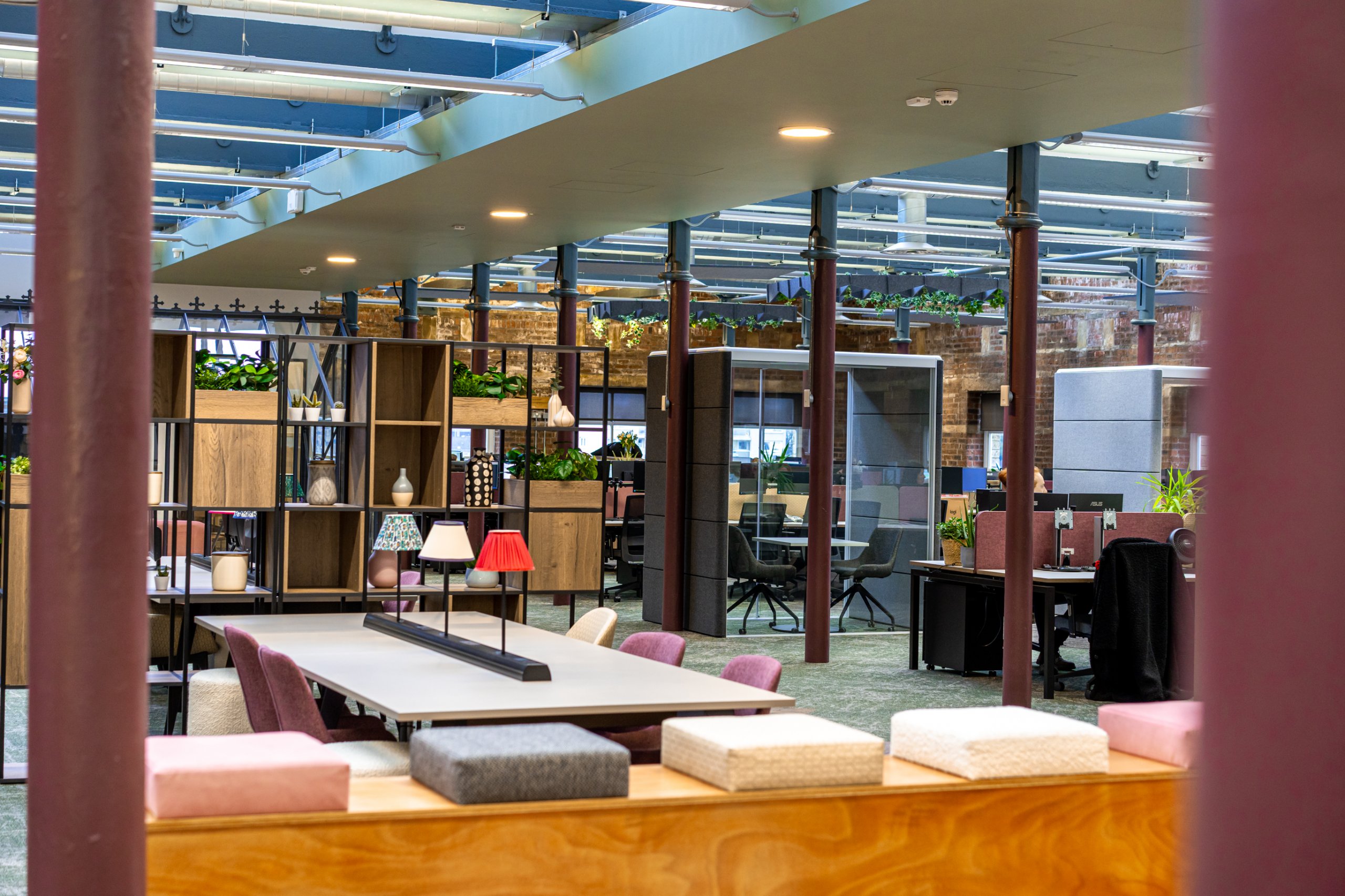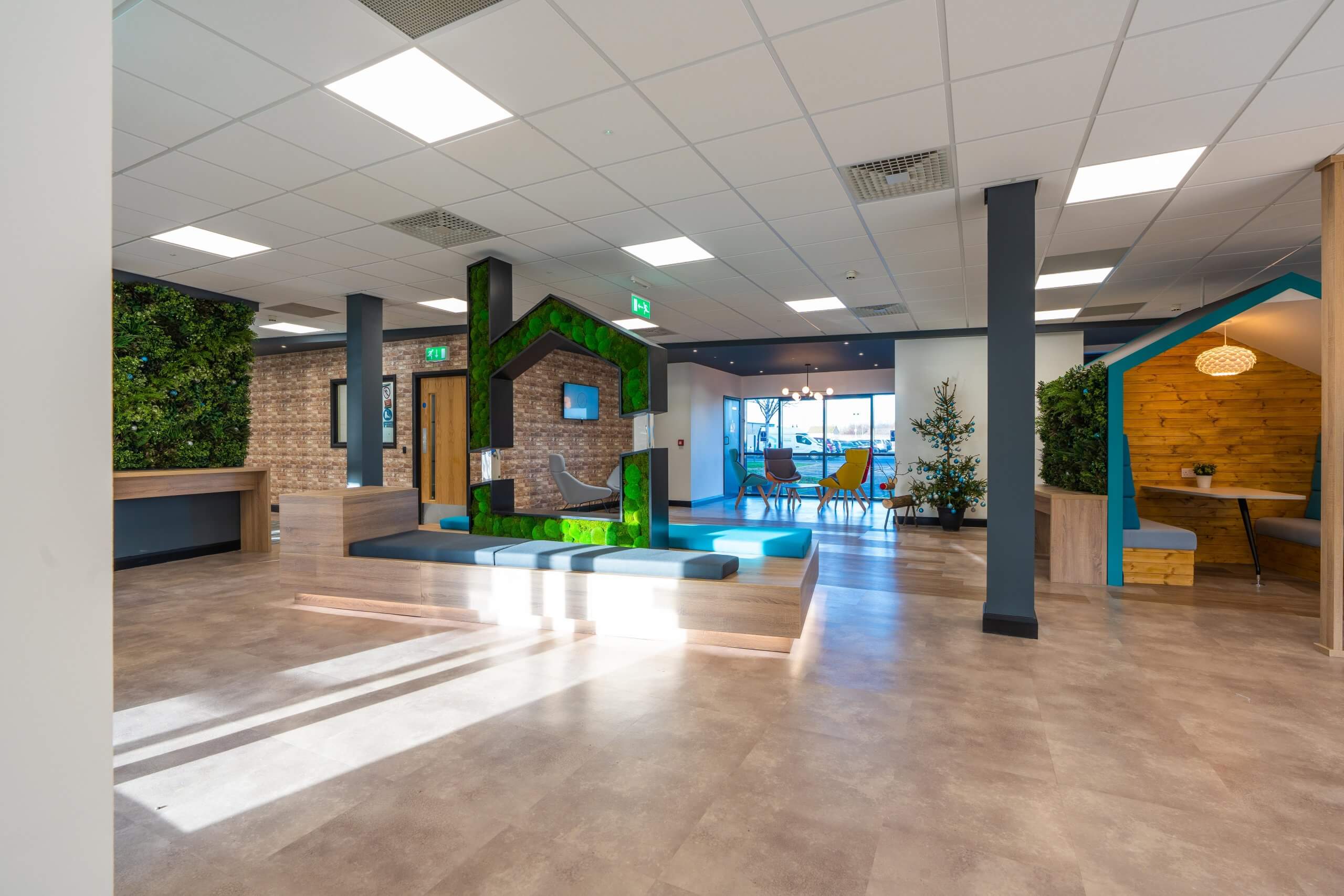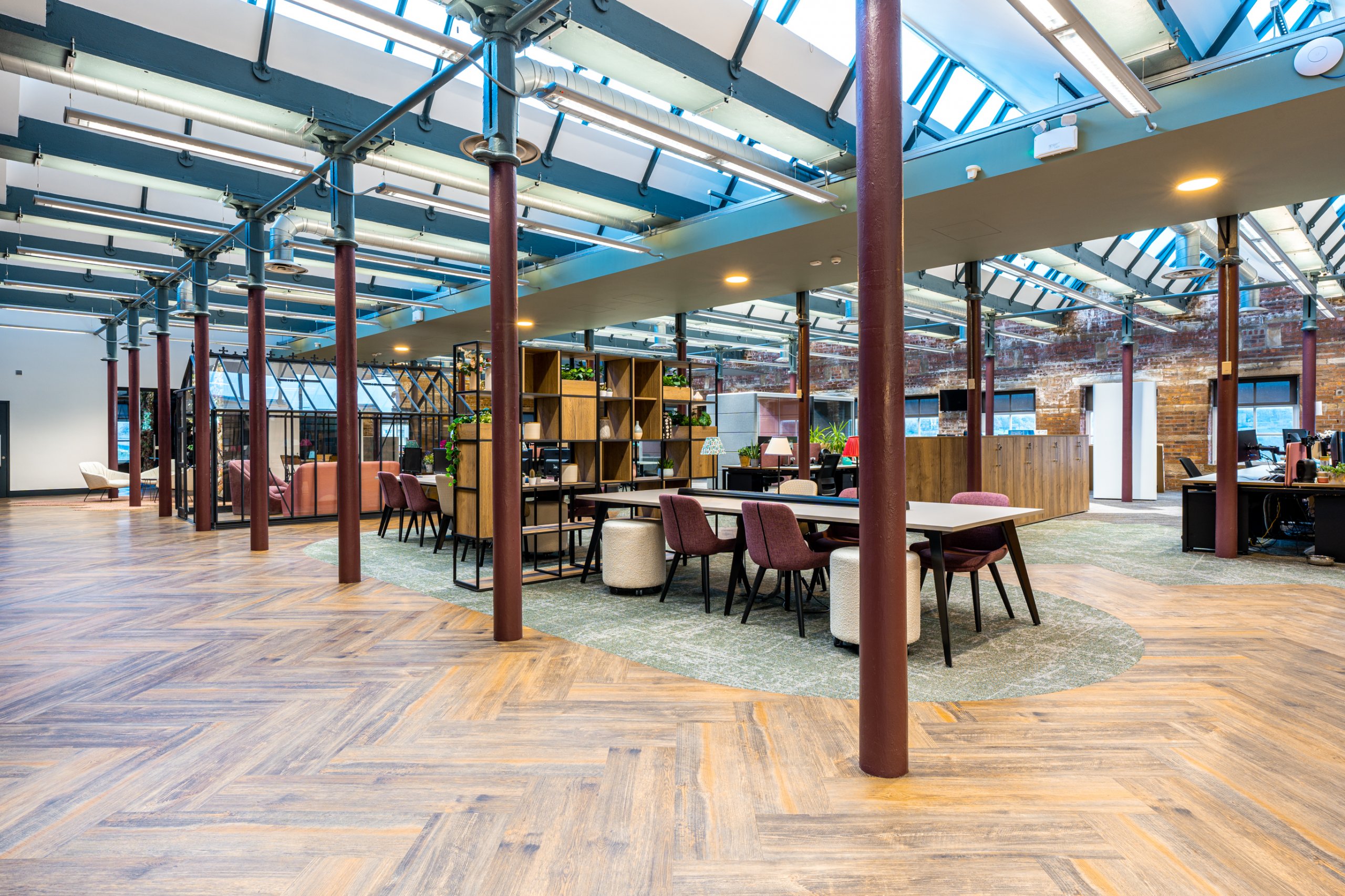As more and more businesses adopt a hybrid working model, having an office design that meets the needs of both in-office and remote workers is essential.
In today’s working landscape, a hybrid office environment is important because it provides employees with increased flexibility to work how they feel benefits them best and allows them to collaborate and communicate with each other, when working away from home.
A recent study, which questioned a total of 600 managers across the UK, found that 75% believed hybrid working increased the productivity of staff members and as such, many businesses are adopting a hybrid working model to create a more efficient workforce.
To achieve an effective hybrid office design, it is important to incorporate design features that employees simply cannot access whilst working from home, which will optimise their work further. Examples of these design qualities include collaboration areas, innovative technology solutions, and modern working areas.
These features will ensure that employees continue to see the value of working from the office, instead of working fully remote.
At Building Interiors, we understand the importance of creating a space that supports your hybrid workforce. Here’s our checklist for designing a hybrid office that meets the needs of your staff and your business.
A flexible layout is essential for a hybrid office. The space should be designed to accommodate both in-person and virtual collaboration. This may involve a mix of open plan workstations, private offices, and agile working spaces.
Technology is key to a successful hybrid office. Employees can now communicate digitally from anywhere in the world, so the technological capabilities of a hybrid office must be able to compete with this.
The space should be equipped with the latest technology to

enable seamless communication and collaboration between in-office and remote workers. Video conferencing technology, digital whiteboards, and collaborative software are all necessary tools to make sure you can facilitate digital communication and collaboration effectively in the workplace.
In a hybrid office, employees may spend more time working from home, but they still need comfortable workstations when they come into the office.
Office furniture such as ergonomic chairs and desks can help to improve comfort and reduce the risk of injury, while adjustable lighting and temperature controls can improve productivity and comfort.
Quiet zones are important for employees who need to focus on individual tasks and can be designed to provide a distraction-free environment.
Office partitioning is useful to create temporary working areas but if you would like something more permanent, soundproof walls and doors will be ideal to create uninterrupted focus areas.
Breakout spaces are important for collaborative work and informal meetings, and can help to spark creativity amongst staff. These areas can be designed to provide a more relaxed environment, with comfortable seating and a more informal atmosphere.

Wellness features can help to improve workplace well-being and productivity. This may involve incorporating natural light, greenery, and exercise equipment into the design of the space.
Research has shown that plants can improve air quality and create a pleasant and calming environment, and exposure to natural views can reduce stress.
Storage solutions are important for keeping the office space organised and tidy. This may involve incorporating shelving, cabinets, and lockers into the design of the space.
Branding is important for creating a professional image and establishing a sense of identity. It also allows employees to feel a sense of ownership when working in the office. The office space should be designed to reflect the values and branding of your business, through the use of colours, graphics, and signage.
Remember not to overdo this though as too much branding can lead to employees feeling overwhelmed. Instead, look to incorporate colours that represent the atmosphere you want to create in your office.
You can find out more about colour theory in office design here – https://buildinginteriorsgroup.co.uk/knowledge-and-news/what-colours-should-you-use-in-your-new-office-design/
Designing a hybrid office requires careful consideration of the needs of both in-office and remote workers. Our recent work with Beyond Housing shows how we have successfully implemented a hybrid design into a modern office space.
You can read more about this project here – https://buildinginteriorsgroup.co.uk/our-work/beyond-housing/
At Building Interiors, we can help you to create a workplace strategy so we can produce a hybrid working space that meets the needs of your staff and your business perfectly.

If you’d like to discuss your hybrid office requirements with a member of our workplace consultancy team, you can talk to us today on 0113 388 6522, or email us at contact@buildinginteriorsgroup.co.uk. Our team will be happy to help!